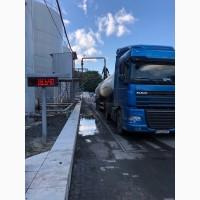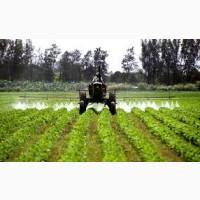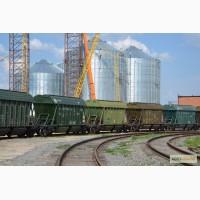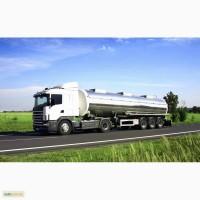sell / buy
cash-32, fertilizer CAS, carbamido-amyachny mixture, Cherkasy region
region: all Ukraine,
Cherkasyka. region
(Cherkasy)
Оновлено:
Fertilizer рідкі азотні. Карбамідо-аміачна суміш (КАС-32).
Aqueous solution of urea and ammonium nitrate containing ammonium and nitrate nitrogen ammonia nitrate and amide nitrogen of urea. Liquid nitrogen fertilizer containing 32% nitrogen. CAS is a high quality mineral fertilizer for all types of soil and for any crop. The main application of CAS is a highly effective fertilizer, equivalent ammonia nitrate or urea for crop crops. The method of obtaining a solution of CAS is based on mixing in a certain ratio of aqueous solutions of urea and nitrate ammonia, neutralization of free ammonia and inhibition of the product obtained. CAS practically does not contain free ammonia, which eliminates the loss of nitrogen during loading, transportation, storage and introduction to the soil. It can be introduced with the help of high -yielding units without simultaneously introduced into the soil, as well as with irrigation water. CAS contains corrosion inhibitor to protect carbon steel equipment. Corrosion inhibitor is used chemicals allowed for use in the prescribed manner. CAS with corrosion inhibitor can be transported in conventional railway and tanker trucks. The low crystallization temperature minus 2 ° C and freezing minus 26 ° C allows you to transport and store the CAS year -round. The formation of crystals and short -term freezing of solutions of CAS in warehouses is not a lot of danger because with increasing temperature crystals dissolve, and nitrogen fertilizers completely restore their properties. The CAS-32 supply is carried out by rail and 1009 .
Karbamido is an ammonia mixture, CAS can be used for all crops, but most appropriate - for grain spikelets as a major fertilizer or for feeding. In production conditions, as a result of its more uniform introduction into the soil, the efficiency of CAS compared to solid nitrogen fertilizers is much higher. When using the CAS as as foliar feeding of the pH of the solution should be within 8-9. The effectiveness of this fertilizer depends largely on the weather. It is maximum when the solution remains on the surface of the leaves for a long time. Therefore, the cultivation processing gives better results in cloudy cool weather. Spraying CAS plants can cause necrotic spots or tissue damage on the leaves. The degree of damage to the leaves depends on the culture, the phase of its development, the dose of fertilizer and, especially, the weather. The introduction of cash desks at the beginning of early spring growth (first feeding), when the air temperature does not exceed 5-10 C, dangerous for plants even at a dose of 80-100 kg / ha. When applying the CAS on winter at the beginning of the growing season (the first feeding), when the temperature is not higher than 10 C, dilution of fertilizer is not required. When carrying out the second feeding in the phase of the beginning or middle of the tube of the plant, when the air temperature is 16-18 C and above, the dose of fertilizer should not exceed 20-30 kg / ha. Use in such conditions doses of N40 and more, especially in sunny weather, causes leaves of leaves and decrease in yield. Therefore, with the second feeding of winter CAS, to avoid burns, it is advisable to dilute the mixture with water in a ratio of 1: 2. The terms of winter fertilizer often coincide with the dates of treatment with herbicides, fungicides and retardants. Therefore, the introduction of CAS is easy to combine with weeds and diseases. The introduction of CAS in the dose of N20-30 in conjunction with the butyl ether of 2.4 D (the rate of 1.2 kg / ha) in the bush or tube phase gives the same effect as the separate introduction of these funds, but the economic effect is much higher in combination (shared) use by reducing energy costs. When applying CAS on winter crops together with herbicide, fertilizer should be diluted with water in a ratio of 1: 3. A good economic effect gives combined use on winter CAS and retardants. Studies show that when processing winter crops in the conditions of intensive technology, combined (joint) use of CAS with retardants, fungicides and herbicides is economically advantageous because it reduces energy costs and labor resources by reducing operations during application. It should be noted that on winter wheat crops the economic efficiency of compatible use of CAS, retardants and fungicides significantly higher than on winter rye crops. CAS with retardants on winter crops is recommended to be introduced during the beginning and middle of the tube of plants. When jointly introduced by CAS with retardants at the beginning of the tubing, the dose of nitrogen should not exceed 40 kg / ha during later feeding (the middle of the tube) - 20-30 kg / ha before spikelets - not more than 10-15 kg / ha. This is due to the fact that in a later period when the air temperature above 18 s there is a danger of burns of the upper leaves, which are actively involved in the formation of assimilants. Effective use of CAS on winter crops in conjunction with fungicides, in particular with Bayleton and Fundazole. The dose of fungicides in the mixture with CAS - 0.5-0.6 kg / ha. When jointly introducing CAS with retardants and fungicides, it is also necessary to dilute the mixture with water, depending on the air temperature in a ratio of 1: 2 - 1: 3. The use of CAS individually or together with retardants, herbicides and fungicides on winter crops should be planned based on the possibility and conditions for each farm. Such schemes of use of CAS and mixtures with other means of chemicals are possible:(//tractor-service.com)
1. Звичайна доза КАС під озимі та ярі зернові культури визначається в залежності від стану посівів, грунтового родючості, попередника, запланованого врожаю; в другу підгодівлю доза коригується з урахуванням результатів грунтової і рослинної діагностики.
2. Early spring nutrition of winter nitrogen after wintering. CAS feeding should be carried out first and foremost on crops where the tiller is required. The dose of nitrogen in the first feeding is determined depending on the condition of winter, soil fertility and precursor. On crops with plant density 200-300 pcs. per 1 sq. m dose of nitrogen -80 -50 kg / ha, on more dense (300-350 plants per 1 square m) -50-40 kg / ha.
3. A mixture of CAS with a fundosol in winter is used in the spring at the beginning of the exit of the plants into the tube with the spread of root rot and the appearance of signs of powdery mildew. The dose of CAS is determined depending on the need of plants, not more than 40 kg / ha, the fundosol - 0.5 kg / ha.
4. A mixture of CAS with retardants can be used at the beginning of the tube. Dose of nitrogen 30-40 kg / ha, retardants tour-3.5-4 kg / ha, kamposan-3-3.5 l / ha. The mixture should be used on winter wheat. Winter rye is more effective CAS and Camposan. 5. A mixture of CAS with retardants and fungicides is used in the middle of the tube. Dose of nitrogen 20-30 kg / ha, tour -3.5-4 kg / ha, camposan -3-3-5,5, Bayleton -0,5 kg / ha. Working mixtures, retardants and fungicides should be prepared immediately before application.
6. Under the barley of the CAS it is most advisable as the main fertilizer. If necessary, foliar feeding, the CAS dose should not exceed 15-20 kg / ha, as higher doses cause burns of plants. The CAS should be diluted with water in a ratio of 1: 1.5-2. The use of CAS in an undiluted form for barley feeding in the beginning of the tubing at the N30 dose leads to a decrease in grain yield by 4-4.5 c / ha. When applying the same dose of CAS, together with the body, the crop decreases by 5.2, in the mixture of CAS + Tilt + Cu - by 5-8 c / ha. Thus, the use of CAS in the feeding of spring cereals in the end of the tiller - tubing and in a mixture with fungicides and trace elements in undiluted form is not recommended. Working fluid consumption (CAS, retardants and fungicide) - 250-350 l / ha, depending on the dose of nitrogen. The economic efficiency of the combined use of CAS and other chemical means in winter wheat and rye experiments when growing winter cereals with intensive technology is higher than when they are used. The main reason for this is the reduction of the cost of application and the uniform distribution of fertilizer in the area
Aqueous solution of urea and ammonium nitrate containing ammonium and nitrate nitrogen ammonia nitrate and amide nitrogen of urea. Liquid nitrogen fertilizer containing 32% nitrogen. CAS is a high quality mineral fertilizer for all types of soil and for any crop. The main application of CAS is a highly effective fertilizer, equivalent ammonia nitrate or urea for crop crops. The method of obtaining a solution of CAS is based on mixing in a certain ratio of aqueous solutions of urea and nitrate ammonia, neutralization of free ammonia and inhibition of the product obtained. CAS practically does not contain free ammonia, which eliminates the loss of nitrogen during loading, transportation, storage and introduction to the soil. It can be introduced with the help of high -yielding units without simultaneously introduced into the soil, as well as with irrigation water. CAS contains corrosion inhibitor to protect carbon steel equipment. Corrosion inhibitor is used chemicals allowed for use in the prescribed manner. CAS with corrosion inhibitor can be transported in conventional railway and tanker trucks. The low crystallization temperature minus 2 ° C and freezing minus 26 ° C allows you to transport and store the CAS year -round. The formation of crystals and short -term freezing of solutions of CAS in warehouses is not a lot of danger because with increasing temperature crystals dissolve, and nitrogen fertilizers completely restore their properties. The CAS-32 supply is carried out by rail and 1009 .
Karbamido is an ammonia mixture, CAS can be used for all crops, but most appropriate - for grain spikelets as a major fertilizer or for feeding. In production conditions, as a result of its more uniform introduction into the soil, the efficiency of CAS compared to solid nitrogen fertilizers is much higher. When using the CAS as as foliar feeding of the pH of the solution should be within 8-9. The effectiveness of this fertilizer depends largely on the weather. It is maximum when the solution remains on the surface of the leaves for a long time. Therefore, the cultivation processing gives better results in cloudy cool weather. Spraying CAS plants can cause necrotic spots or tissue damage on the leaves. The degree of damage to the leaves depends on the culture, the phase of its development, the dose of fertilizer and, especially, the weather. The introduction of cash desks at the beginning of early spring growth (first feeding), when the air temperature does not exceed 5-10 C, dangerous for plants even at a dose of 80-100 kg / ha. When applying the CAS on winter at the beginning of the growing season (the first feeding), when the temperature is not higher than 10 C, dilution of fertilizer is not required. When carrying out the second feeding in the phase of the beginning or middle of the tube of the plant, when the air temperature is 16-18 C and above, the dose of fertilizer should not exceed 20-30 kg / ha. Use in such conditions doses of N40 and more, especially in sunny weather, causes leaves of leaves and decrease in yield. Therefore, with the second feeding of winter CAS, to avoid burns, it is advisable to dilute the mixture with water in a ratio of 1: 2. The terms of winter fertilizer often coincide with the dates of treatment with herbicides, fungicides and retardants. Therefore, the introduction of CAS is easy to combine with weeds and diseases. The introduction of CAS in the dose of N20-30 in conjunction with the butyl ether of 2.4 D (the rate of 1.2 kg / ha) in the bush or tube phase gives the same effect as the separate introduction of these funds, but the economic effect is much higher in combination (shared) use by reducing energy costs. When applying CAS on winter crops together with herbicide, fertilizer should be diluted with water in a ratio of 1: 3. A good economic effect gives combined use on winter CAS and retardants. Studies show that when processing winter crops in the conditions of intensive technology, combined (joint) use of CAS with retardants, fungicides and herbicides is economically advantageous because it reduces energy costs and labor resources by reducing operations during application. It should be noted that on winter wheat crops the economic efficiency of compatible use of CAS, retardants and fungicides significantly higher than on winter rye crops. CAS with retardants on winter crops is recommended to be introduced during the beginning and middle of the tube of plants. When jointly introduced by CAS with retardants at the beginning of the tubing, the dose of nitrogen should not exceed 40 kg / ha during later feeding (the middle of the tube) - 20-30 kg / ha before spikelets - not more than 10-15 kg / ha. This is due to the fact that in a later period when the air temperature above 18 s there is a danger of burns of the upper leaves, which are actively involved in the formation of assimilants. Effective use of CAS on winter crops in conjunction with fungicides, in particular with Bayleton and Fundazole. The dose of fungicides in the mixture with CAS - 0.5-0.6 kg / ha. When jointly introducing CAS with retardants and fungicides, it is also necessary to dilute the mixture with water, depending on the air temperature in a ratio of 1: 2 - 1: 3. The use of CAS individually or together with retardants, herbicides and fungicides on winter crops should be planned based on the possibility and conditions for each farm. Such schemes of use of CAS and mixtures with other means of chemicals are possible:(//tractor-service.com)
1. Звичайна доза КАС під озимі та ярі зернові культури визначається в залежності від стану посівів, грунтового родючості, попередника, запланованого врожаю; в другу підгодівлю доза коригується з урахуванням результатів грунтової і рослинної діагностики.
2. Early spring nutrition of winter nitrogen after wintering. CAS feeding should be carried out first and foremost on crops where the tiller is required. The dose of nitrogen in the first feeding is determined depending on the condition of winter, soil fertility and precursor. On crops with plant density 200-300 pcs. per 1 sq. m dose of nitrogen -80 -50 kg / ha, on more dense (300-350 plants per 1 square m) -50-40 kg / ha.
3. A mixture of CAS with a fundosol in winter is used in the spring at the beginning of the exit of the plants into the tube with the spread of root rot and the appearance of signs of powdery mildew. The dose of CAS is determined depending on the need of plants, not more than 40 kg / ha, the fundosol - 0.5 kg / ha.
4. A mixture of CAS with retardants can be used at the beginning of the tube. Dose of nitrogen 30-40 kg / ha, retardants tour-3.5-4 kg / ha, kamposan-3-3.5 l / ha. The mixture should be used on winter wheat. Winter rye is more effective CAS and Camposan. 5. A mixture of CAS with retardants and fungicides is used in the middle of the tube. Dose of nitrogen 20-30 kg / ha, tour -3.5-4 kg / ha, camposan -3-3-5,5, Bayleton -0,5 kg / ha. Working mixtures, retardants and fungicides should be prepared immediately before application.
6. Under the barley of the CAS it is most advisable as the main fertilizer. If necessary, foliar feeding, the CAS dose should not exceed 15-20 kg / ha, as higher doses cause burns of plants. The CAS should be diluted with water in a ratio of 1: 1.5-2. The use of CAS in an undiluted form for barley feeding in the beginning of the tubing at the N30 dose leads to a decrease in grain yield by 4-4.5 c / ha. When applying the same dose of CAS, together with the body, the crop decreases by 5.2, in the mixture of CAS + Tilt + Cu - by 5-8 c / ha. Thus, the use of CAS in the feeding of spring cereals in the end of the tiller - tubing and in a mixture with fungicides and trace elements in undiluted form is not recommended. Working fluid consumption (CAS, retardants and fungicide) - 250-350 l / ha, depending on the dose of nitrogen. The economic efficiency of the combined use of CAS and other chemical means in winter wheat and rye experiments when growing winter cereals with intensive technology is higher than when they are used. The main reason for this is the reduction of the cost of application and the uniform distribution of fertilizer in the area
|
shop, contacts | |
Yaroslav=/ Reviews, Info. Pedashоцінка активності | |
|
Phone:
095 XXXXXX
= Display
| |
| http://selfo.com.ua | |
= ID ad: #79116
= (added by the registered user, registration date: 23-06-2010)
Додано / Оновлено: 06-03-2025 07:32
(Topical, to: 06-03-2026)
Постійна адреса оголошення:
Shows / views for today:?, Total:?







